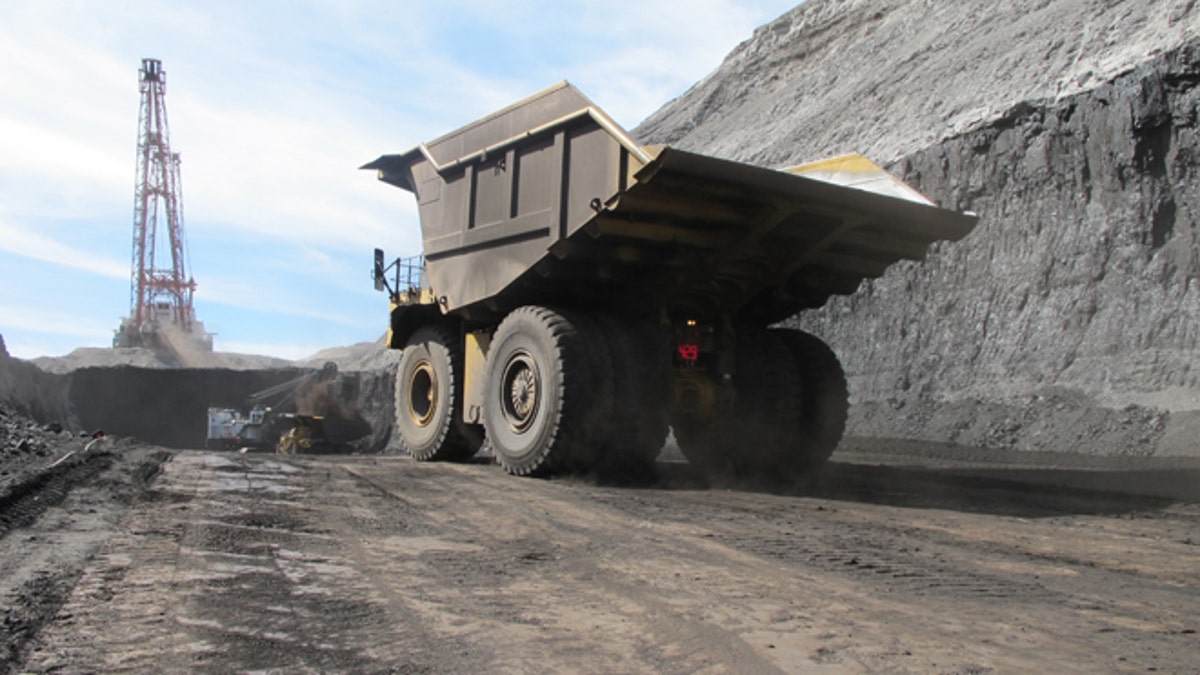
(Fox News)
The American coal industry is accusing the Obama administration of using the Environmental Protection Agency to end the use of coal despite the president's claim of having an "all of the above" energy policy.
Earlier this year, the EPA issued its Mercury Air Toxics Standards (MATS), which the agency said will eliminate 90 percent of mercury and acid gas released into the air by coal-fired power plants.
"I would say this administration is certainly unfriendly towards coal," Wyo. Governor Matt Mead said. "And in my view it is a war on coal."
Mead proudly pointed out that Wyoming is currently the nation's largest coal producing state. "We export more coal than any other state by far...about 400 million tons per year. Wyoming coal produces a lot of electricity in this country," he said.
He and others in the coal industry are concerned, however, that the EPA's MATS rules, which go into effect in January 2016, will devastate coal production in America and force many older power plants to close because the cost of retrofitting them will be too high.
Combined with other EPA policies and regulations, Betsy Monseu, CEO of the American Coal Council said, "Starting in about 2012 and continuing to 2020, we'll have about 60 gigawatts of coal-fired generation coming off-line...and the majority of that will come off in regard to the implementation of MATS in 2015 and 2016."
One of Monseu’s issues is the way she said the administration is targeting coal, which currently fuels around 40 percent of the electricity produced in the U.S. "Increasingly we face a situation where policy is dictated not by Congressional mandate but rather by executive order and regulatory mandate from the EPA," she said.
The EPA declined an interview request but said in a statement to Fox News, "The reality is that some older coal-burning power plants are being phased out due to business decisions to move away from investing in aging facilities, many of which are more than 50 years old, do not control pollution, and are almost never run anywhere near full capacity. Other factors, like low natural gas prices relative to other fuels and slow growth in demand for electricity also contribute to these market-driven business decisions."
R.J. Harrington, executive director of the Boulder, Colo.-based Clean Energy Action, believes coal was crucial to American industrialization but is now doing more harm than good.
"Those resources need to stay in the ground because if we need to continue to extract and burn them we're going to continue to exacerbate the problems of climate change," he said.
Harrington said replacing the use of coal in America's power infrastructure will not be easy,but must be done. "We want to discuss a measured buyout of these resources, and a measured transfer to the promise of renewable energy, distributed generation, and even larger utility scale solar and wind."
"We need all energy," countered Mead, "whether it's renewable, whether it's coal, oil, or gas, and we all have a responsibility to do it in the best way possible."
"One of the keys to America's success is to have an energy strategy that does in fact have 'all of the above' and recognizes no energy source is perfect,” Mead said. “All of them need improvement. Let's focus our efforts on improving rather than by regulation taking energy sources off the table."
Recent federal court rulings have sided with the EPA. On April 15, a three-judge panel of the U.S. Court of Appeals for the D.C. Circuit upheld the EPA's MATS rule. Two weeks later, the U.S. Supreme Court upheld another EPA rule that places limits on the amount of smog from coal plants that can cross state lines.




